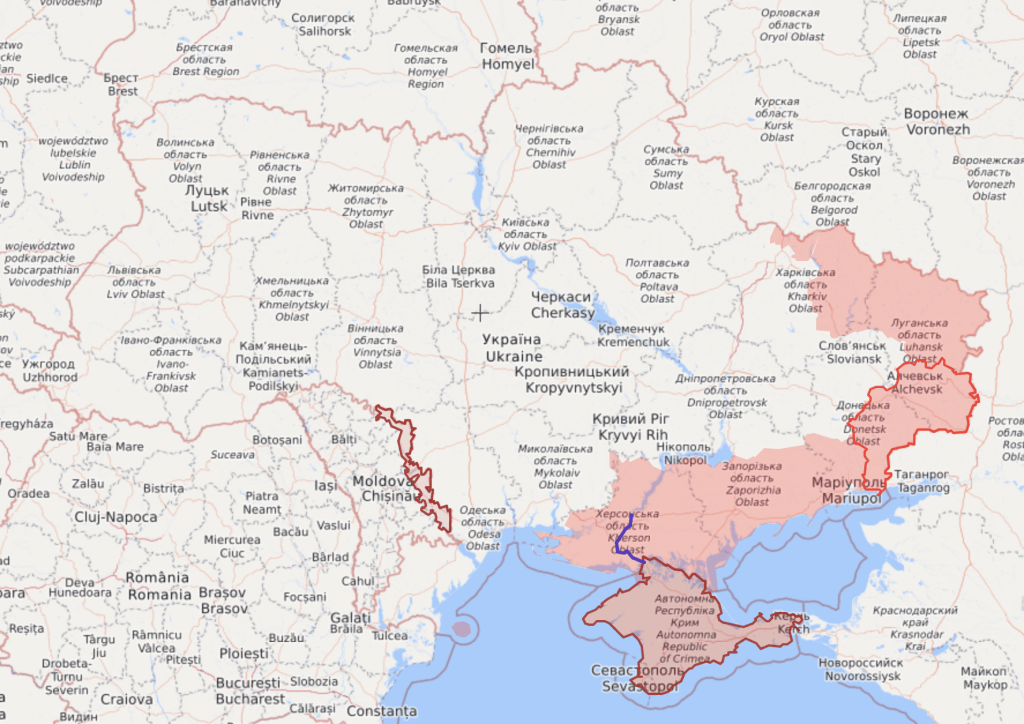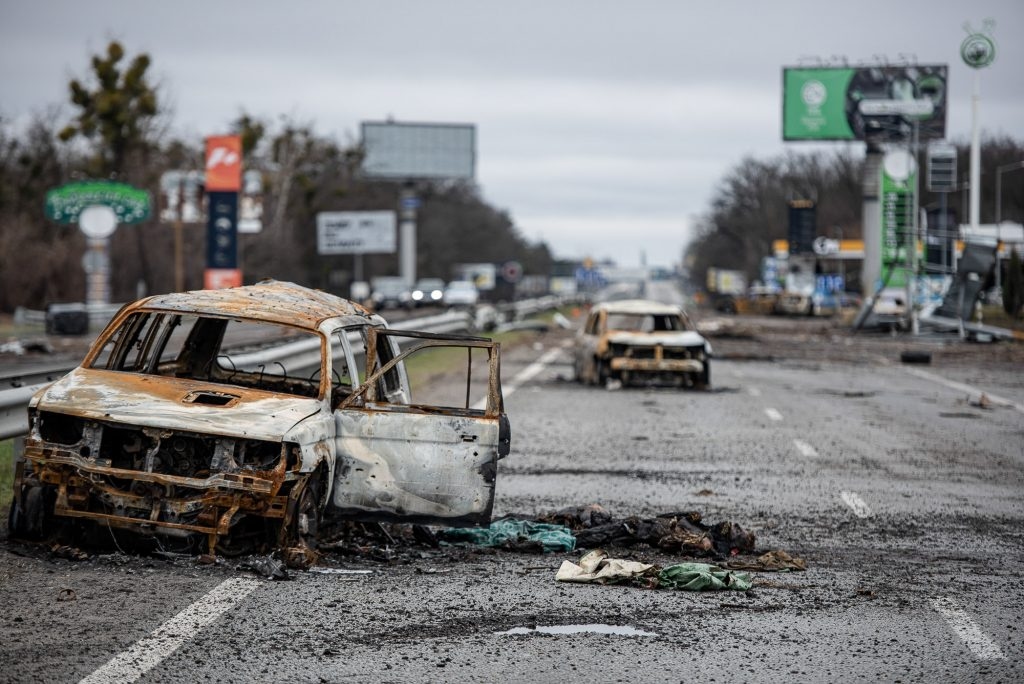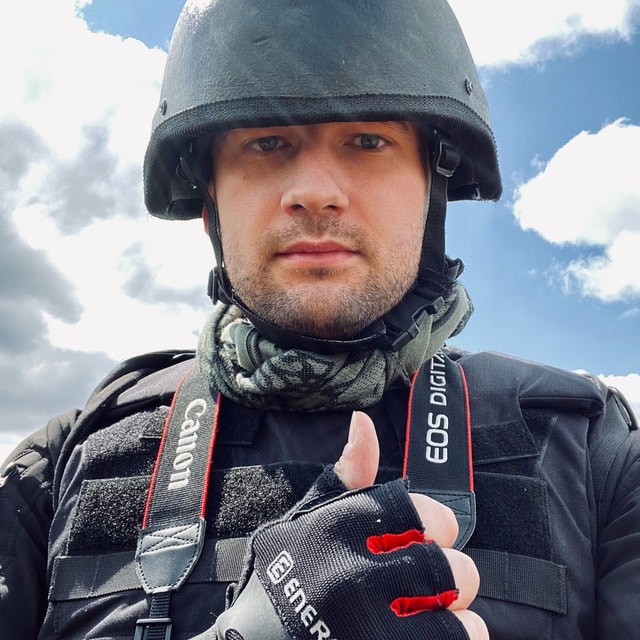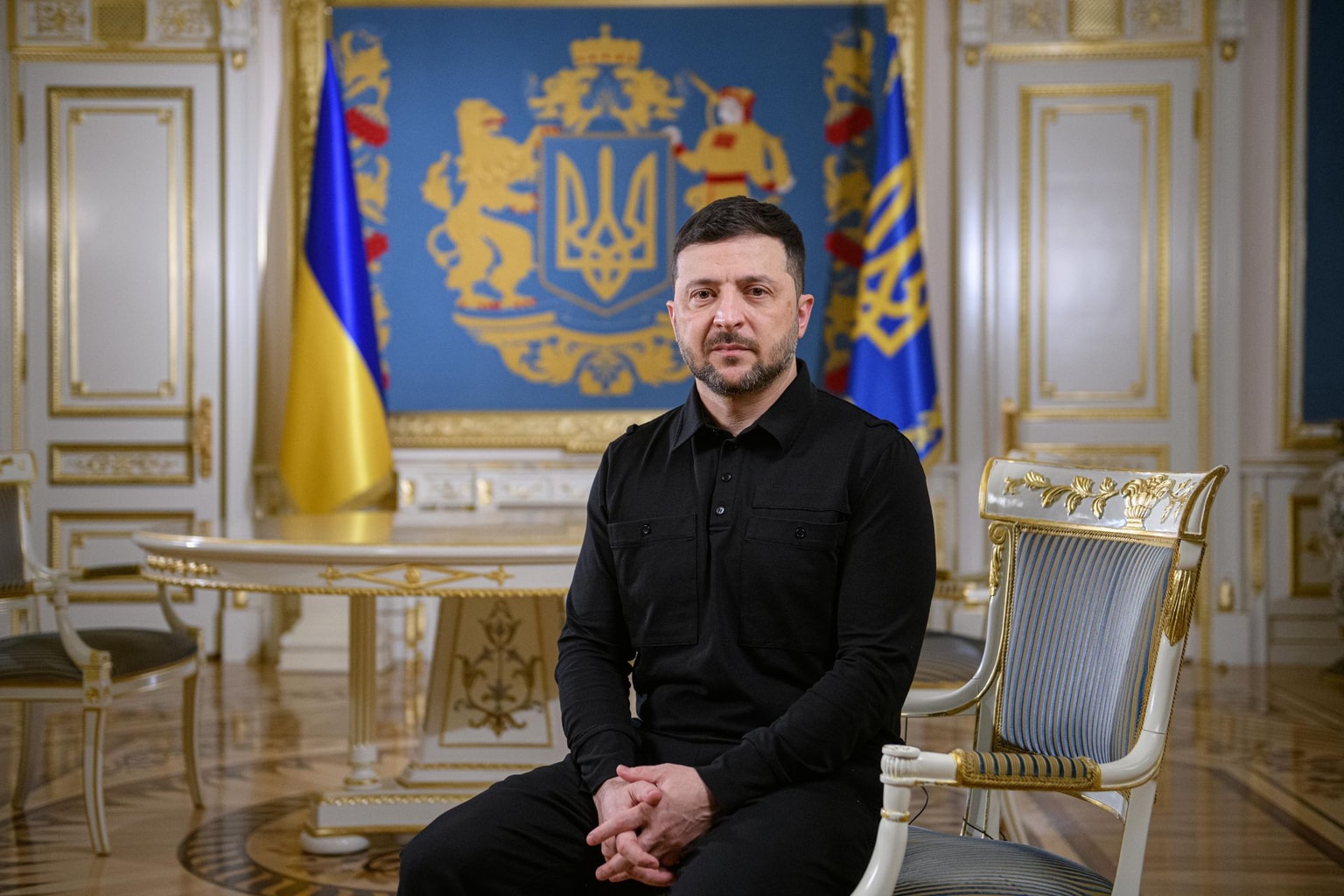New phase in war opens up as Ukraine defeats Russia in battle of Kyiv

The battle of Kyiv is over, with Ukraine as its victor.
After nearly 40 days of fierce hostilities, by April 1 Russian forces had withdrawn from battlefields in northern Ukraine within just days.
Despite a massive effort, Russia failed to encircle the Ukrainian capital and install a blockade.
After sustaining heavy losses and accomplishing none of their key goals, Russian forces retreated, but not before inflicting devastating damage to Ukrainian towns and cities and committing numerous war crimes.
The political decision to give up on Kyiv reverberated around the country. Along with Kyiv Oblast, Russian forces in early April also left Chernihiv and Sumy oblasts.
These moves amounted to the first significant Russian defeat in its all-out war against Ukraine. But it also opened the war’s new phase, in which Russia will attempt to regroup to achieve narrower goals in Ukraine’s east and south.
The Battle of Kyiv may be over, but what comes next is the even more decisive and difficult Battle of Donbas. This fight is likely to define the war’s outcome.
Humiliating setback
The outcome of the operation to surround Kyiv became very clear in late March.
Following nearly two weeks of a protracted operational pause, Russian forces stationed west and northwest of Kyiv had yet to resolve serious logistical issues, particularly regarding food and fuel supplies.
By mid-March, Russia was still in control of all key transport points to the northwest, including the Bucha-Irpin-Hostomel triangle, as well as Borodyanka and Ivankiv. This afforded Russian forces an unchallenged long supply line between Belarus by way of the area around the Chornobyl nuclear power plant.
Russia also controlled parts of the E40 highway, effectively severing key communications channels running west. The goal was clear: to envelop Kyiv from the west.
But attempts to go further south of the E40 since mid-March made virtually no progress.
East of Kyiv, Russia also continued with fierce attempts to advance along the E95 and H07 highways running from Chernihiv and Sumy, respectively. But over the first month of the war, it also failed to seize any of the two cities, despite brutal fighting and heavy bombardment.
It also failed to secure firm control of its long supply lines, suffering from devastating Ukrainian attacks along highways near Ukraine's northwestern woods. Ukrainian military and paramilitary units practicing hit-and-run tactics masterfully targeted hostile armored power and supply convoys, effectively wreaking havoc among Russian ranks.
West of Kyiv, the Russian military was eventually bogged down in close-quarter combat in dense urban terrain, where Russian air and artillery power lost its efficacy.
The advancement, slow and painful, stalled, as Russian forces continued to sustain losses and supply shortages. Attempts to use the operative lull to regroup and reassess its campaign near Kyiv, it appears, also resulted in nothing.

Manpower shortage was also obvious: according to data collected by Ukraine, Russia had deployed nearly 20 battalion tactical groups to attack Kyiv, a well-defended city of at least 3.5 million.
Beginning on March 20, Ukrainian forces both east and west of the city launched a series of counter-offensive moves that started to bring new, but limited results. On March 22, Ukrainian forces liberated and gained a foothold in the town of Makariv west of Kyiv along the Zhytomyr Highway.
In the following, Russian positions weakened along the highway as well as in the Irpin-Hostomel-Bucha triangle. Social media posts began circulating in Ukraine about a potential pocket in the triangle, an act of fierce revenge for the ill-fated Ukrainian defeats of 2014.
According to the British Defense Ministry, after March 25, Russian forces east of Kyiv were sustaining losses and running out of supplies. The Ukrainian military, in a series of counter-attacks, also continued regaining towns and villages along the Sumy highway.
The Ukrainian victory in Irpin, the full liberation of which was publicly declared on March 28, was very likely a loud wake-up call for Russia.
The full withdrawal started shortly following the Russian Defense Ministry announcing a “drastic decrease in military activity in the Kyiv and Chernihiv directions” on March 29.
Contrary to expectations, units with Russia’s 29th, 35th, and 36th combined arms armies did not leave at least some of its forces entrenched for a long static war at key points. In late March, official statements from the British Defense Ministry still expected a new battle in the suburbs of Kyiv.
But it never came. The Russian military presence in Kyiv Oblast effectively evaporated within nearly 48 hours.
The Russian command simply backed away from many local military gains it had fought for weeks, having secured nothing.
It left Hostomel and Bucha, with multiple pieces of evidence of mass executions, torture, and rape revealed as the Ukrainian military retook the cities. It also left Borodyanka and Ivankiv, vital transportation points. It left scores of dead bodies and many documented instances of mass pillaging, which says a lot about the invading army’s morale and discipline.
As shortly as April 2, Ukraine's military raised the Ukrainian flag above the Chornobyl Nuclear Power Plant, which had been seized by Russia in the earliest hours of Russia's all-out invasion.
The whole of Kyiv Oblast was declared free of Russian forces later that day.

Russia's decision was far-reaching — within the next few days, Ukrainian forces also regained control of the Chernihiv Oblast, and on April 4, according to local authorities, there were no longer any cities occupied by Russia in Sumy Oblast either.
The Russian withdrawal from the north was also precipitated by successful Ukrainian counterattacks, like the one near the city of Trosytanets in Sumy Oblast on March 26.
Two major cities are no longer suffering from Russian attempts to isolate them. In many ways, their stubborn resistance relieved a lot of pressure from Kyiv and helped the capital city prepare for effective defense.
All told, the Kremlin has given up on nearly 40% of the territories it seized after Feb. 24.
This humiliating defeat for the Russian military has very likely put more strain on morale among its troops.
New phase
According to international monitors, Russian units withdrawing from northern Ukraine have sustained serious losses or have even been rendered combat ineffective.
Many of them are likely to require “significant re-equipping and refurbishment” if they can be thrown into battle again, according to British military intelligence from April 5.
According to the Institute for the Study of War, a U.S.-based think tank, the main body of Russian forces near Kyiv completed an organized retreat covered by artillery. But Russian retrograde has been so disorderly that some pockets of Russian forces were left behind.
In Sumy and Chernihiv oblasts, reports from local authorities also suggest that many of the remaining Russian pockets were cleaned up by advancing Ukrainian forces.
“The disorder of the Russian withdrawal suggests that at least some of the units now reconcentrating in Belarus and western Russia will remain combat ineffective for a protracted period,” the ISW said on April 3.
“Russian troops attempting to refit after pulling back from around Kyiv will likely have to reconsolidate into their units, identify which soldiers are still present, sort out their equipment and assess its combat readiness, and generally reconstitute before they can even begin to receive replacements and new equipment and prepare for further combat operations.”
According to Ukraine's figures, as of April 2, up to 75 Russian battalion tactical groups were still operational. Meanwhile, up to 34 battalion tactical groups were being restored in Russia and Belarus, while 16 others were destroyed in combat. At the beginning of the all-out invasion, Russia was believed to have deployed nearly 120-125 battalion tactical groups against Ukraine.

A significant part of Russian forces is exhausted — and requires a lot of time and resources, including manpower, to return to action. But upon all estimates, Russia is still scrambling to amass more skilled manpower to compensate for losses, let alone amplify its power.
The Kremlin has not yet decided to declare partial or general mobilization for its so-called “special military operation” against Ukraine.
There are few doubts that Russia will redeploy those forces to Donbas, as well as to the Izium axe in Kharkiv Oblast to exert pressure against the largest Ukrainian military group in eastern Ukraine.
All signs point to this being the new pivotal epicenter of the war.
A successful breakthrough from Izium farther south will allow Russia to encircle Ukrainian forces in key cities of Donbas and then potentially defeat them, which would be a devastating blow to Ukraine.
To do so, the ISW believes, Russia would have to take Sloviansk and then move toward occupied Donetsk and Horlivka to the south to get a significant portion of the Ukrainian military surrounded.
“If Russian forces are unable to take Sloviansk at all, Russian frontal assaults in Donbas are unlikely to independently break through Ukrainian defenses, and Russia’s campaign to capture the entirety of Luhansk and Donetsk oblasts will likely fail,” the ISW said on April 4.
Additionally, Russian reinforcements from northeastern Ukraine to Donbas are “highly unlikely to meaningfully change the balance of forces.”
“Russian forces withdrawn from the Kyiv axis are highly unlikely to be effectively deployed elsewhere in Ukraine and are likely a spent force,” the think tank said.

Meanwhile, the latest independent studies say Russia is nonetheless planning to immediately redeploy forces from the Kyiv Oblast to the Kharkiv axe.
Conflict Intelligence Team (CIT), an online investigative project, said on April 4 that a train carrying troops had been spotted in Belarus on April 2 likely carrying BMD-2 vehicles of Russia’s 76th, 98th, and 31st airborne brigades that had been engaged in combat in Kyiv Oblast.
According to the CIT, the train was heading to Novy Oskol in Russia’s Belgorod Oblast close to Valuiki, a key military point of concentration for the Kharkiv axe of attack.
T-73B3 tanks likely coming from Russia’s Smolensk Oblast were also spotted on April 3 being transported to Valuyki.
“The new arriving hardware will likely proceed south via to Kupiansk and Izium (in Ukraine), which was recently seized by the Russian military, towards Sloviansk,” the ISW said.
“The redeployment of the withdrawn and possibly unused vehicles means that the Russian command is set on and the battle of Donbas is going to heat up in the coming days.”









